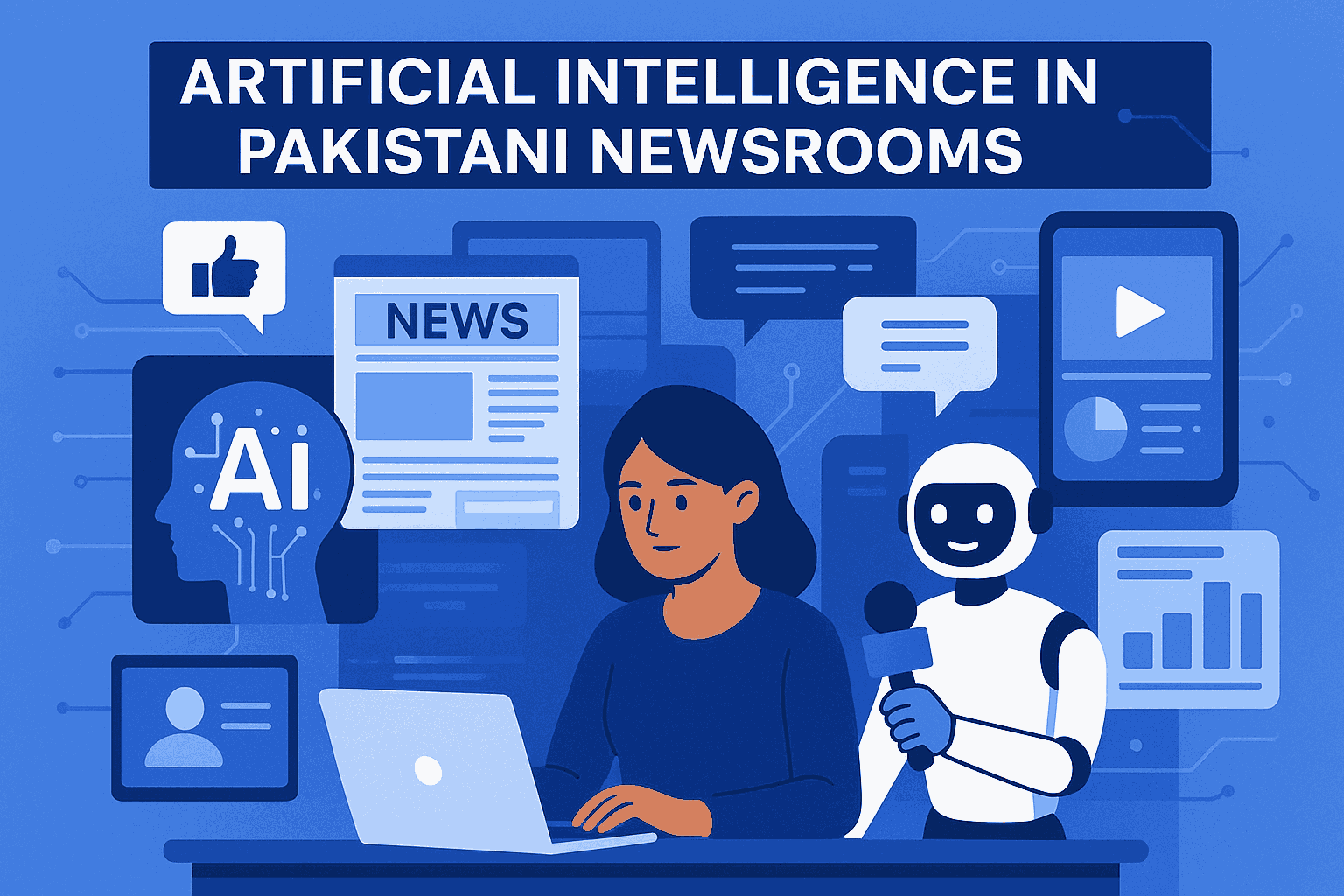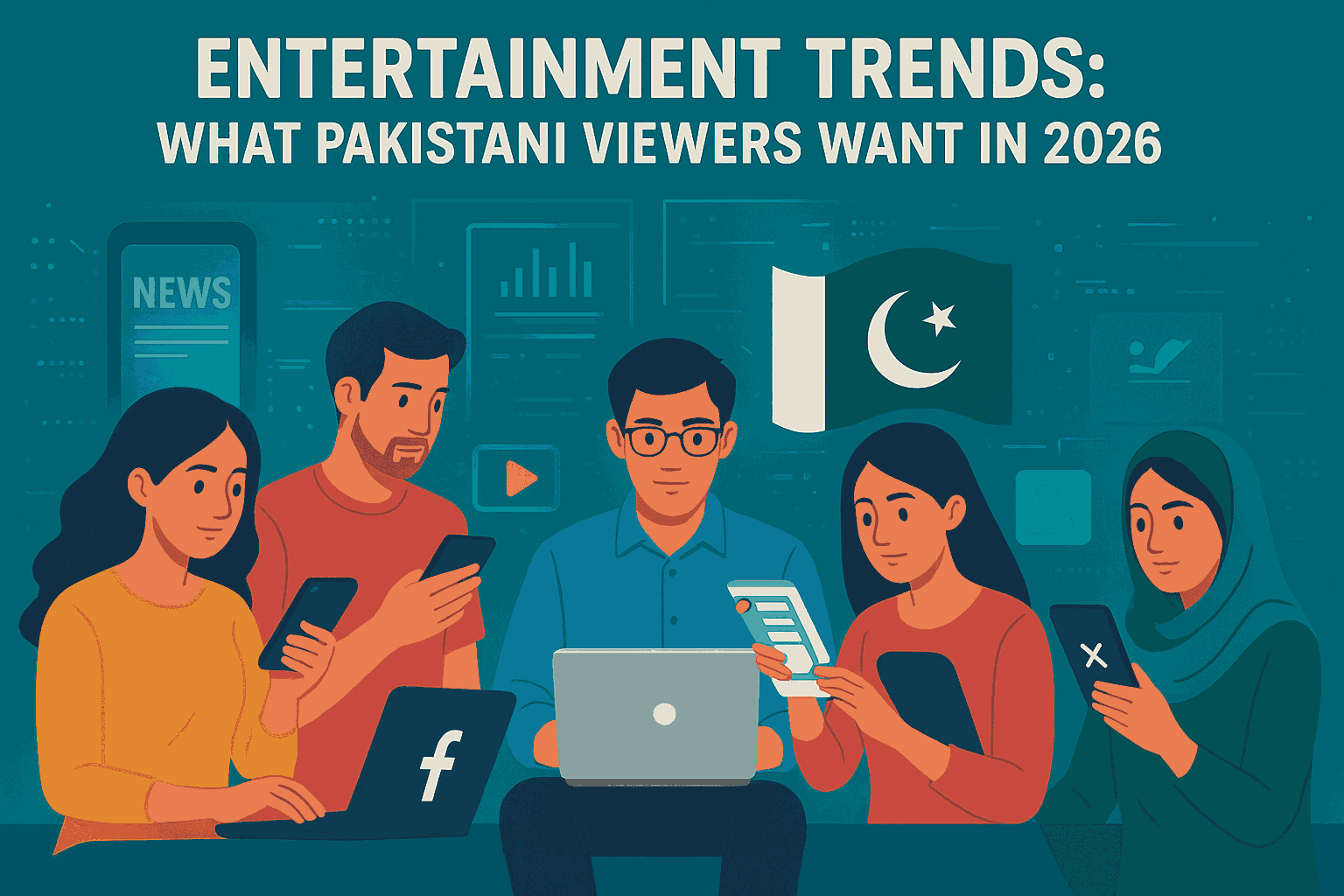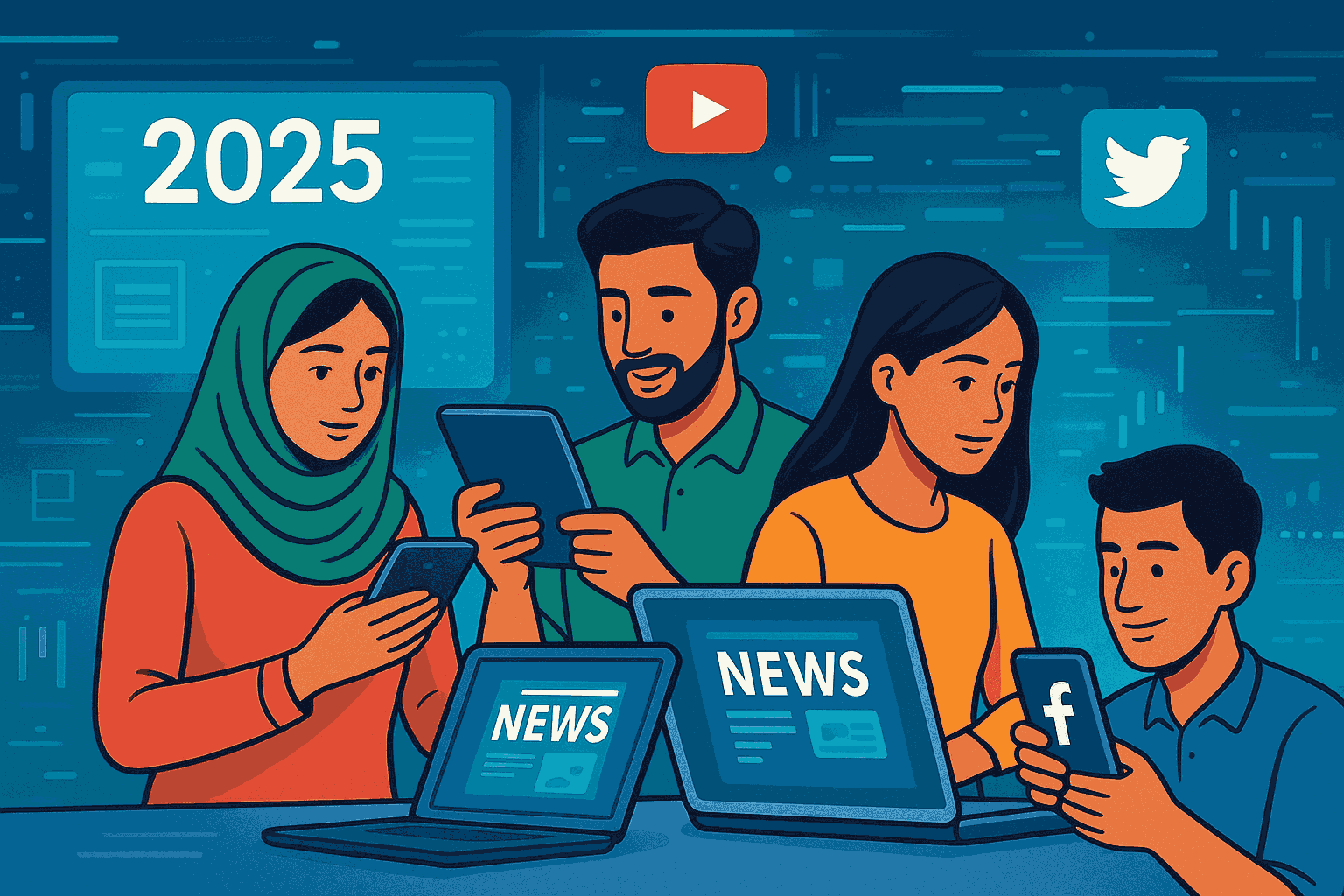Artificial Intelligence in Pakistani Newsrooms: Transforming the Future of Journalism
By Sana KhalilPublished On 12 Oct 2025

The media landscape in Pakistan is evolving rapidly. What was once dominated by traditional reporting and manual editing is now being reshaped by Artificial Intelligence (AI). From automated news writing to audience analytics and content personalization, AI is changing how Pakistani newsrooms operate, making journalism faster, smarter, and more data-driven.
As technology continues to advance, AI is no longer a futuristic idea — it’s a practical necessity for modern journalism. In this article, we’ll explore how AI is transforming Pakistani newsrooms, its benefits, challenges, and what the future holds for the industry.
The Rise of AI in Global and Local Media
Across the world, leading media organizations such as Reuters, The Washington Post, and BBC have integrated AI into their newsroom workflows. These systems are capable of producing short news reports, analyzing audience behavior, and even predicting trending topics.
Pakistan’s media industry is now following a similar path. With the growing competition between digital and broadcast platforms, news organizations like 9 News HD are turning to AI tools to streamline operations, enhance storytelling, and connect better with audiences.
In the past, newsrooms relied on human editors for every task — from content creation and fact-checking to scheduling and formatting. Today, AI is helping journalists focus more on creative and investigative work while automating repetitive tasks behind the scenes.
How AI Is Being Used in Pakistani Newsrooms
AI is influencing nearly every stage of the journalistic process. Here’s how it’s being applied in Pakistan’s evolving media landscape:
1. Automated News Writing
AI-powered software can now generate short articles based on structured data. For instance, updates on stock market results, weather forecasts, or cricket scores can be automatically written and published in seconds.
This technology allows Pakistani news outlets to report faster and more accurately, especially for routine stories where human intervention is not essential.
2. Real-Time Fact-Checking
Misinformation is one of the biggest challenges facing journalism today. AI tools like machine-learning-based verification systems help detect fake news by cross-referencing data from credible sources.
Fact-checking organizations in Pakistan are beginning to experiment with AI-powered systems that analyze text, images, and videos to verify authenticity before publication.
3. Content Recommendation Systems
Just like Netflix suggests movies based on user preferences, AI algorithms in news apps and websites recommend articles based on readers’ interests.
For platforms like 9 News HD, this means personalized news experiences for every viewer — ensuring that audiences stay engaged longer and receive content tailored to their preferences.
4. Voice-to-Text and Translation Tools
AI-driven transcription software is making interviews, press conferences, and speeches easier to process. These tools can instantly convert voice into text, saving hours of manual transcription work.
In multilingual countries like Pakistan, translation AI is also crucial — allowing journalists to publish stories in both Urdu and English without losing nuance or accuracy.
5. Audience Analytics and Predictive Insights
AI-powered analytics track what kind of stories are trending, which headlines attract attention, and what time audiences are most active.
This data-driven approach helps editors make smarter decisions about content strategy, timing, and tone, ensuring that the news reaches people when they’re most likely to engage.
Benefits of AI for Pakistani Journalism
1. Speed and Efficiency
AI drastically reduces the time required to create, edit, and publish stories. Breaking news can be covered almost instantly, giving newsrooms a competitive edge.
2. Data-Driven Decision-Making
Instead of relying solely on intuition, editors can now use audience data and engagement metrics to guide content planning and marketing.
3. Enhanced Accuracy
AI tools improve fact-checking, detect biased language, and flag inconsistencies, helping maintain credibility — a critical factor in today’s fast-moving news cycle.
4. Cost-Effectiveness
Automation can reduce operational costs by handling repetitive and technical tasks, allowing human journalists to focus on storytelling and analysis.
5. Personalized Reader Experience
AI enables individualized content delivery — whether it’s push notifications, article recommendations, or video suggestions — increasing viewer satisfaction and loyalty.
The Ethical Dilemmas of AI in Journalism
While AI offers numerous advantages, it also introduces a series of ethical challenges that Pakistani media must address.
1. The Risk of Job Displacement
Automation can reduce the demand for certain roles, particularly in data entry, transcription, and basic reporting. It’s essential that media organizations upskill their employees so they can work alongside technology rather than compete with it.
2. Bias in Algorithms
AI systems learn from data — but if that data contains bias, the results will reflect it. For example, algorithms trained on biased datasets may unintentionally promote one political narrative over another.
To avoid this, Pakistani media houses must ensure transparency and diversity in AI development.
3. Accountability and Transparency
When an AI tool produces an error — such as misidentifying a source or spreading misinformation — who is responsible? The programmer or the publisher? This question remains a global debate and requires clear ethical guidelines.
4. Over-Reliance on Technology
While AI can assist with data and automation, it lacks the human judgment, empathy, and cultural understanding that define quality journalism. It’s crucial to balance machine efficiency with human insight.
How Pakistani Media Can Adapt to AI Integration
To make the most of AI while maintaining journalistic integrity, Pakistani media organizations can take several key steps:
- Train Journalists in Digital Literacy
Equip reporters and editors with knowledge of how AI tools work, ensuring they understand both the benefits and risks. - Invest in AI Research and Collaboration
Partner with universities, tech companies, and startups to develop localized AI solutions tailored to Pakistan’s linguistic and cultural diversity. - Establish Ethical Guidelines
Create frameworks that define how AI-generated content should be labeled, verified, and published. - Promote Transparency
Clearly communicate when AI tools are used — for instance, in data visualizations, content curation, or automated reporting — so audiences remain informed and trust is maintained.
Real-World Examples from Pakistani Newsrooms
Some major Pakistani media houses have already begun experimenting with AI:
- Geo News and ARY are testing AI-based analytics tools to understand viewer engagement across platforms.
- Digital-first outlets are using AI for YouTube captioning, social media optimization, and content tagging.
- 9 News HD and similar networks are exploring automation in live coverage and breaking-news alerts.
These innovations show that the integration of AI is not just a global phenomenon — it’s happening here, shaping Pakistan’s digital journalism era.
The Future of AI-Driven Journalism in Pakistan
Looking ahead to 2025 and beyond, AI is expected to become an essential part of newsroom operations in Pakistan. We can anticipate:
- AI anchors and news presenters capable of delivering multilingual bulletins.
- Augmented Reality (AR) integration for immersive storytelling experiences.
- Predictive journalism, where algorithms forecast future trends and potential news events.
- Collaborative tools that blend human creativity with machine precision for faster, more accurate reporting.
The goal isn’t to replace journalists but to empower them — allowing human creativity and AI intelligence to work hand in hand.
Conclusion
Artificial Intelligence is revolutionizing the way news is gathered, produced, and delivered in Pakistan. By automating tasks, analyzing vast amounts of data, and enhancing audience engagement, AI is creating new opportunities for journalists and media houses alike.
However, as with any innovation, it must be used responsibly. The future of journalism in Pakistan will depend on how effectively we balance technological advancement with ethical storytelling.
In the coming years, AI won’t just support journalism — it will redefine it, enabling platforms like 9 News HD to lead Pakistan into a smarter, more connected media future.


